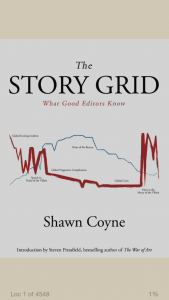I often see comments from people who would like to be a beta reader but are not really sure how to go about it. This is to answer some of the most common questions.
How do I become a beta reader?
Just find yourself a writer who needs a beta reader and volunteer. It might be through your local writing group, or through goodreads, or some other place where you can find writers. Good beta readers are always in demand, and writers are usually looking to build up a regular team.
What do I have to do?
The basic idea is to read the manuscript (often a novel, but it could equally be a memoir, or non-fiction), and then tell the writer what you thought of it. The important thing is to be honest and as specific as you can. They might have a list of questions they want answered – are the characters believable? did the setting sound realistic? – or they might just want your overall impression.
How long does it take to do a beta read?
How long do you usually take to read a book? Some beta readers can provide feedback within a couple of days; others take longer. As long as you and the writer understand how long it is likely to take, there is no problem.
Do I have to be honest?
Yes, but you also need to be kind. The writer has put in a lot of work, and you should always bear this in mind when you give feedback. it’s also good to comment on things that you enjoy or feel works well, so that your feedback is not all negative.
Do I have to be a writer myself?
No. You just have to be a reader. Make sure you read genres you feel capable of commenting on, and remember that the writer is looking for feedback to help make their work better. You don’t have to tell them how to fix any problems you find; you just have to point out anything you see as an issue. Is the pace flagging? Do you find the character unlikeable? Is that event unbelievable? Once you’ve pointed out what you see as a problem, it’s up to the writer to consider your feedback and deal with it if they consider it necessary.
Do I have to be good at grammar/spelling/punctuation?
No. It’s not the beta reader’s job to point out errors like that, although some do anyway. You are the test reader, giving the writer an idea of your response. The writer has spent a long time very close to their manuscript; they need someone to look at it with fresh eyes and check the content for them to see how readable it is.
How do I actually read their work?
It’s possible you might be given a printed copy, especially if you know the person offline. It’s more likely that you’ll be provided with an electronic copy. This might be a Word document, PDF, or a format suitable for an ebook reader. You can usually ask for the version that you would find easiest to work on.
Do I do a written report?
Some beta readers provide comments through the manuscript; some provide feedback via a written report. Some do a combination of both.
Do I have to sign a non-disclosure document?
Some writers might ask you to do that, but most don’t. However, it is expected that you’ll keep their work confidential and not pass it on to others. The same goes for discussing it with other people. On the other hand, once the book is published there’s nothing stopping you promoting it to your friends!
Can I charge for beta reading?
Some people do charge for beta reading. The advantage to you is that you get something back for your time apart from the pleasure and experience of helping out, and the advantage to the writer is that they can be pretty sure you’ll provide feedback. On the other hand, there are plenty of people around who offer a free read. Some writers offer a copy of the finished work as a thank-you, or a mention in the acknowledgements. If you want to make a charge, then I would recommend building up a reputation, collecting testimonials and then testing out the waters, but any beta read fee is unlikely to reflect all the time you spend working on it, unless your fee is very high – and then you’d better be very confident that you’re offering a high level of help and expertise.
What if I really don’t like what I’m reading?
It happens sometimes. A manuscript for beta reading can be very rough and unfinished, and can be tough to get through. Just do your best, and at the very least give the writer some feedback to indicate why you found it so hard, whether it was because the writing style was too rough, the main character too unsympathetic or the pace too slow. The tougher the read, the more important your feedback is. If you can’t finish it, then try to explain the problem.
What if real life intervenes and I just don’t have time?
If you take on a read and then find you can’t complete it, for whatever reason, please do let the writer know. The same applies if you find it will take longer than you thought. Communication is key. Remember that you may be the first to read a piece of work apart from the writer, and it is their precious baby. If they don’t hear back from you, they might assume it’s because you found it terrible and can’t bear to tell them, whereas in reality it’s because you’ve had the flu!

